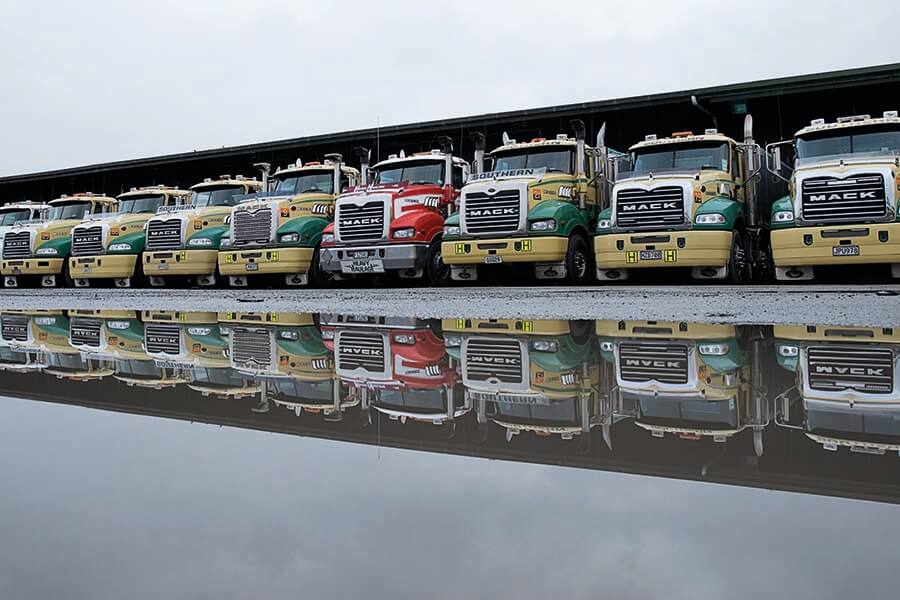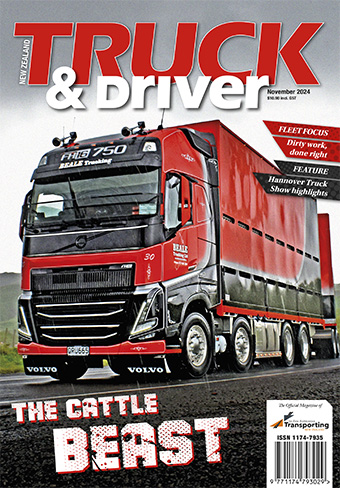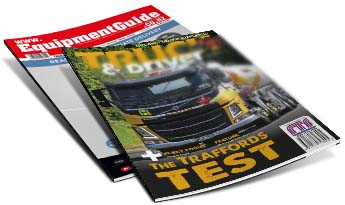Aeolus Truck & Driver News


HWR Group ready for hydrogen move
Aeolus Truck & Driver News
Southland-based transport giant H.W. Richardson Group (HWR) is poised to lead New Zealand’s adoption of hydrogen to reduce emissions from heavy vehicles.
Group CEO Anthony Jones confirms HWR has been trialling a hydrogen dual-fuel truck since the last half of 2021 and is now committed to a fleet of 10 dual-fuel trucks which are scheduled to go on the road in the second quarter of 2023.
The trucks are fitted with pressurised hydrogen tanks behind the cab. With modifications to the intake system, the existing diesel engines run on a dual-fuel mix that replaces up to 40% of the diesel fuel consumption with an equivalent amount of hydrogen. The result is a 40% reduction in exhaust emissions.
“Based on our reviews, the key factors to a sustainable fuels transition will be managing the existing capital base deployed today in the heavy transport industry. That is why we chose dual-fuel in the first instance. It’s a way to transition the industry sustainably to hydrogen. Over time we see our fleet moving to 100% hydrogen fuel cells in the future, but not just yet,” says Jones.
...Southland-based transport giant H.W. Richardson Group (HWR) is poised to lead New Zealand’s adoption of hydrogen to reduce emissions from heavy vehicles.
Group CEO Anthony Jones confirms HWR has been trialling a hydrogen dual-fuel truck since the last half of 2021 and is now committed to a fleet of 10 dual-fuel trucks which are scheduled to go on the road in the second quarter of 2023.
The trucks are fitted with pressurised hydrogen tanks behind the cab. With modifications to the intake system, the existing diesel engines run on a dual-fuel mix that replaces up to 40% of the diesel fuel consumption with an equivalent amount of hydrogen. The result is a 40% reduction in exhaust emissions.
“Based on our reviews, the key factors to a sustainable fuels transition will be managing the existing capital base deployed today in the heavy transport industry. That is why we chose dual-fuel in the first instance. It’s a way to transition the industry sustainably to hydrogen. Over time we see our fleet moving to 100% hydrogen fuel cells in the future, but not just yet,” says Jones.
HWR Group has worked closely with Christchurch’s AF Cryo, part of Fabrum Solutions. AF Cryo has partnered with UK-based Clean Power Hydrogen (CPH2) and supplies the cryogenic cooling system for the CPH2 membrane free electrolyser.
“I would say they are the leaders in this technology, and they have perfected the IP and technology around the liquification of hydrogen and its storage,” says Jones
“We have committed to our first 1.1-Megawatt (MW) electrolyser and storage system with options to buy further. It will be delivered in August and commissioned by March or April next year.”
The system is scalable and produces the hydrogen onsite. The 1.1MW CPH2 electrolyser is capable of producing 450kg of high purity hydrogen per day from water.
“The first one will be in Southland. There are reasons for that, including the access to green power, water, coupled with our existing fuels and transport network ,” Jones says.
The first trucks are new units which will be fitted with the storage tanks and modifications to the intake system in Europe as well as here in NZ.
“We are working with a European supplier that has perfected dual-fuel technology.”
There are also plans to locally retro-fit existing trucks in the HWR fleets.
HWR plans to have 10 trucks on the road in the second quarter of next year to coincide with the first hydrogen plant being commissioned.
The medium-term roll-out of more hydrogen refuelling locations is tied to HWR Group’s Allied Petroleum network which stretches from the Bay of Islands to Stewart Island.
“We will roll out the 1.1MW electrolysers into the existing network where it makes the most sense,” says Jones.
Jones says the dual fuel solution is an ideal course to transition the industry towards zero-emissions.
“The capital investment needed to go 100% hydrogen is astronomical compared to the existing internal combustion engine. Dual fuel technology allows any modern truck to be converted although the design and the tuning will be slightly different depending on brands and roles,” he says.
“I’m in no way against hydrogen fuel-cell vehicles but the capital cost is still very high compared to retro-fitting existing vehicles with a dual-fuel system. This will allow meaningful change to the whole industry.
“But the cost of fuel cells will come down and more efficient ways of storing hydrogen will be developed. Dual-fuel is a way to establish the infrastructure that’s needed to support fuel cells in the future.”
HWR already has some local dual-fuel experience.
“We have had a truck on trial since August last year. We’re not seeing any drop in power at all. We’re not seeing any downsides and we have already learnt a lot.”
Another benefit is the dual-fuel trucks can run on diesel alone if they need to travel beyond the available hydrogen network.
“If you run out of hydrogen, you’re not going to end up with a truck stranded somewhere,” says Jones.
Jones says figures indicate that a single dual-fuel truck running an average of 384km per day can eliminate 102kg of carbon emissions per day.
“We have a fleet of 470 trucks just in the South Island so that would equate to 12.5 million kg of CO2 per year,” he says.
“It’s still a drop in the ocean but it’s a first step to reducing carbon emissions and we need to move now. We know this is going to make a difference.
“For the HWR Group and for Allied Petroleum this represents a big step in our sustainability strategy. We aim to be the leader, but the entire industry can benefit from that,” says Jones.
More hydrogen coverage: NZ Truck & Driver Associate Editor Brian Cowan looks at another New Zealand dual fuel project and the science behind hydrogen combustion engines starting on Page 69.




 + EQUIPMENT GUIDE - FREE
+ EQUIPMENT GUIDE - FREE
